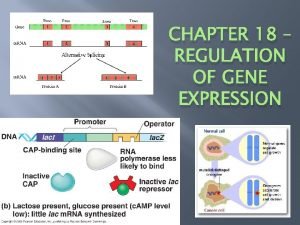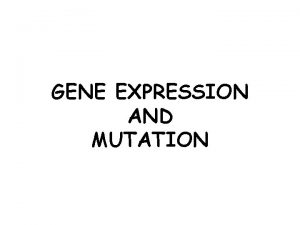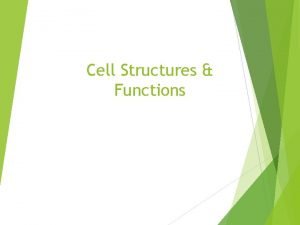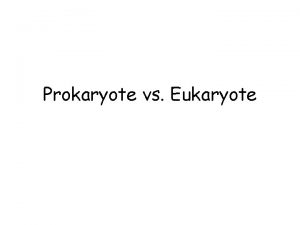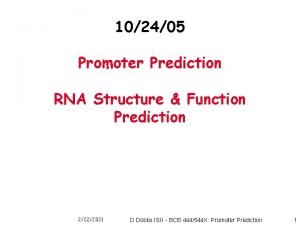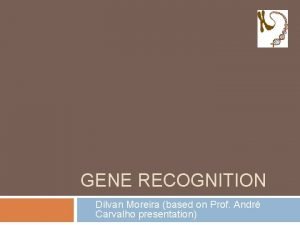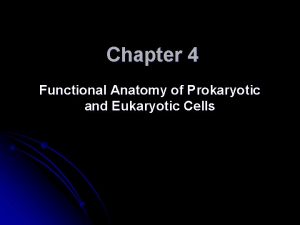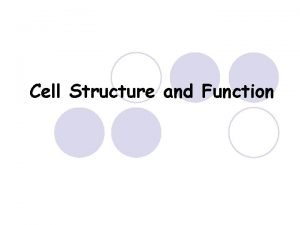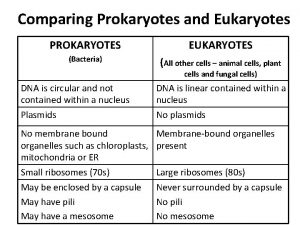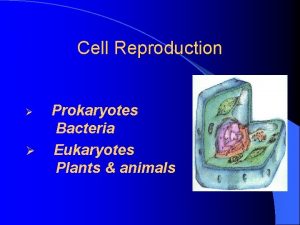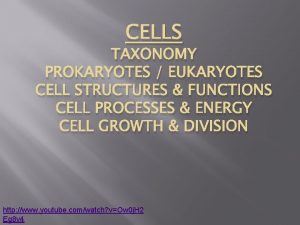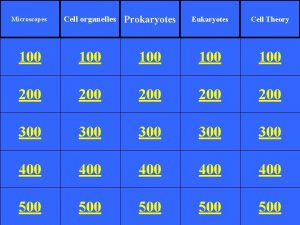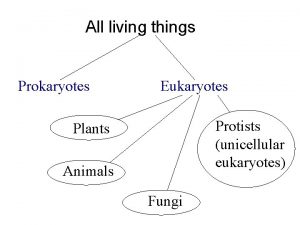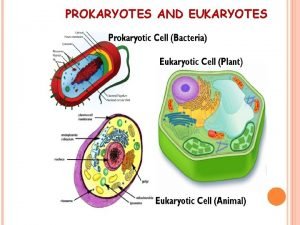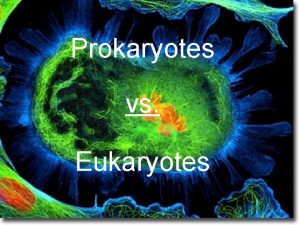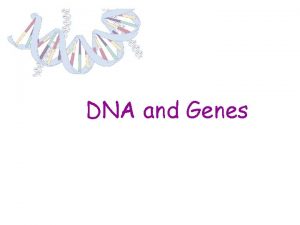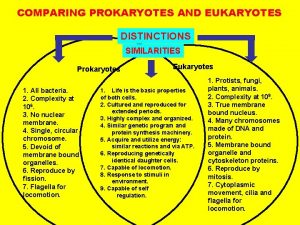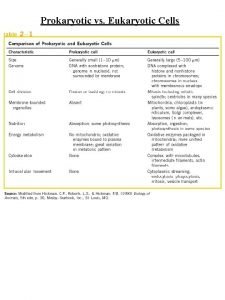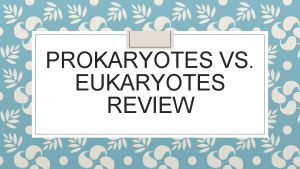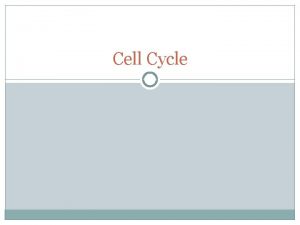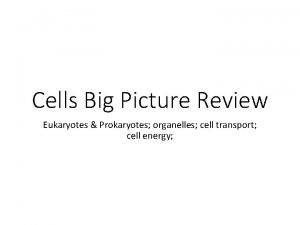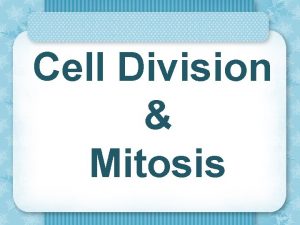Cells Part I Prokaryotes vs Eukaryotes Cell Theory
























- Slides: 24

Cells Part I Prokaryotes vs Eukaryotes

Cell Theory Statements Schleiden Schwann Cells are the basic unit of organization in all living things All living things are camposed of one or more cells All cells arise from pre-exsiting cells Virchow

Cell Types • Two cell types that exist – Prokaryotes: unicellular – Eukaryotes: multicellular

Prokaryotes • • • Single celled organism No true nucleus Does contain genetic information No membrane bound structures Bacteria

Eukaryotes • Cell contains a true nuclues • Does contain membrane bound structures • Found in multi-cellular organisms

Unicellular vs Multicellular PROKARYOTES-UNICELLULAR EUKARYOTES-MULTICELLULAR One celled Multi-celled Bacteria Plants, animals No cell structures Contains specialized structures SIMPLEORGANISM COMPLEX ORGANISM THEY BOTH CAN CARRY OUT THEIR LIFE FUNCTIONS DEPENDING ON THE ORGANISM

Levels of Organization organism Organ sytem organ tissue cell

Cell organelles- plant vs animal

Nucleus • Control center for the cell • Contains genetic information DNA/RNA wrapped within chromosomes • Present in both plants and animal cell

Nucleolus • Granular structure located inside the nucleus • Contains RNA and proteins • Produces ribosomes for the cell

Cell Membrane (Plasma Membrane) • Surrounds the cell • Allows the movement of certain material into and out of the cell (semi-permeable) • Composed of layers • Found in animal and plant

Cytoplasm • Liquid substance composed of water, salts, enzymes, organic molecules • Allows for movement of materials through the cell

Endoplasmic reticulum • Comes in two varieties Smooth- transports fats through cell Rough-transports proteins through cell. Rough because of ribosomes on surface

Ribosomes • Synthesize proteins for the cell • Found throughout cell and on rough ER

Mitochondria • Powerhouse of the cell • Generates energy (ATP) for cell function through cell respiration • Found in plants and animal cell

Golgi apparatus • Sometimes called Golgi bodies • Processes the synthesized proteins and fats • Found in plants and animals

Vacuoles • Storage sites for water and minerals • Plant cell has a larger vacuole than animal cell • WHY?

Lysosomes • Clean the cell of debris or broken down cell material • THINK OF LYSOL • Only found in eukaryotic cells

Centrioles • Found only in animal cells. Not found in all plant • Used in cell replication and division

Cilia • Short hairlike projections • Used to aid in movement of certain cells (cells lining your trachea, paramecium) • Not found in eukaryotic plant cells

Flagella (um) • Whiplike structure in some cells that aid in movement ( protist-euglena, sperm cell) • Not found in plants

Cell Wall • • Found only in plant cells Allows the cell to be rigid Made of cellulose Give the cell its shape

Chloroplast • Found only in plant cells • Site of photosynthesis (plant makes its own food) • Chloroplasts have a chemical called chlorophyll give a plant their green color. Chlorophyll A and B get activated for photosynthesis

 Repressible operon
Repressible operon Transcription in prokaryotes vs eukaryotes
Transcription in prokaryotes vs eukaryotes Prokaryotes vs eukaryotes gene regulation
Prokaryotes vs eukaryotes gene regulation Small vacuoles
Small vacuoles Diff between prokaryotes and eukaryotes
Diff between prokaryotes and eukaryotes Cytoskeleton nickname
Cytoskeleton nickname Differences between prokaryotic and eukaryotic cells
Differences between prokaryotic and eukaryotic cells Eukaryote examples
Eukaryote examples Prokaryotes vs eukaryotes
Prokaryotes vs eukaryotes Multiple choice questions on prokaryotes and eukaryotes
Multiple choice questions on prokaryotes and eukaryotes Gene prediction in prokaryotes and eukaryotes
Gene prediction in prokaryotes and eukaryotes Prokaryotes vs eukaryotes chart
Prokaryotes vs eukaryotes chart Polimerase
Polimerase Prokaryotes vs eukaryotes venn diagram
Prokaryotes vs eukaryotes venn diagram Prokaryotic cells vs eukaryotic cells
Prokaryotic cells vs eukaryotic cells Functional anatomy of prokaryotic and eukaryotic cells
Functional anatomy of prokaryotic and eukaryotic cells What is the function of the rough endoplasmic reticulum
What is the function of the rough endoplasmic reticulum The scientist mathias schleiden studied _______ in ______.
The scientist mathias schleiden studied _______ in ______. Olfactory groove keros classification
Olfactory groove keros classification Papillary duct of bellini
Papillary duct of bellini Parafollicular cells vs follicular cells
Parafollicular cells vs follicular cells Gametic cells vs somatic cells
Gametic cells vs somatic cells Somatic cells vs germ cells
Somatic cells vs germ cells Red blood cells and white blood cells difference
Red blood cells and white blood cells difference Plant cell animal cell venn diagram
Plant cell animal cell venn diagram


